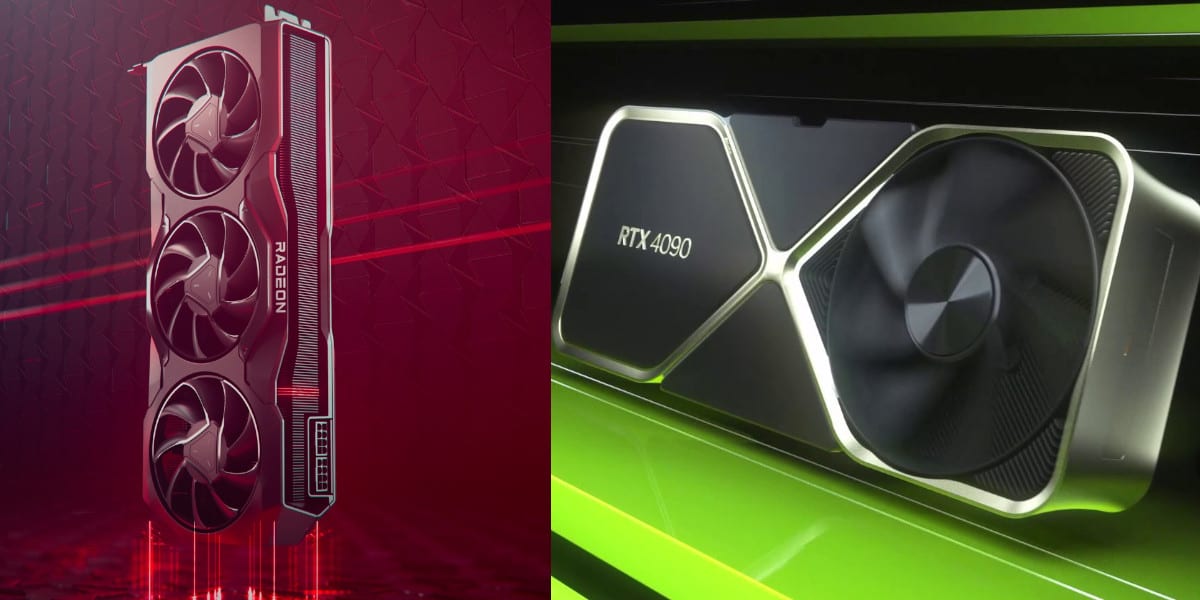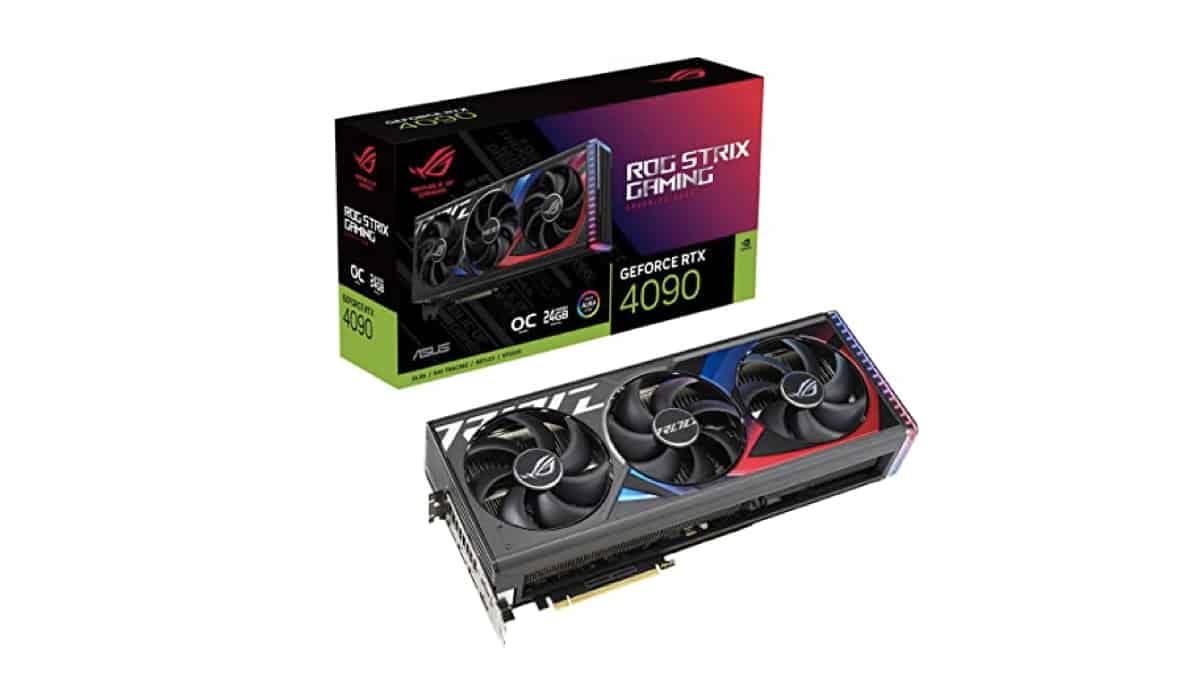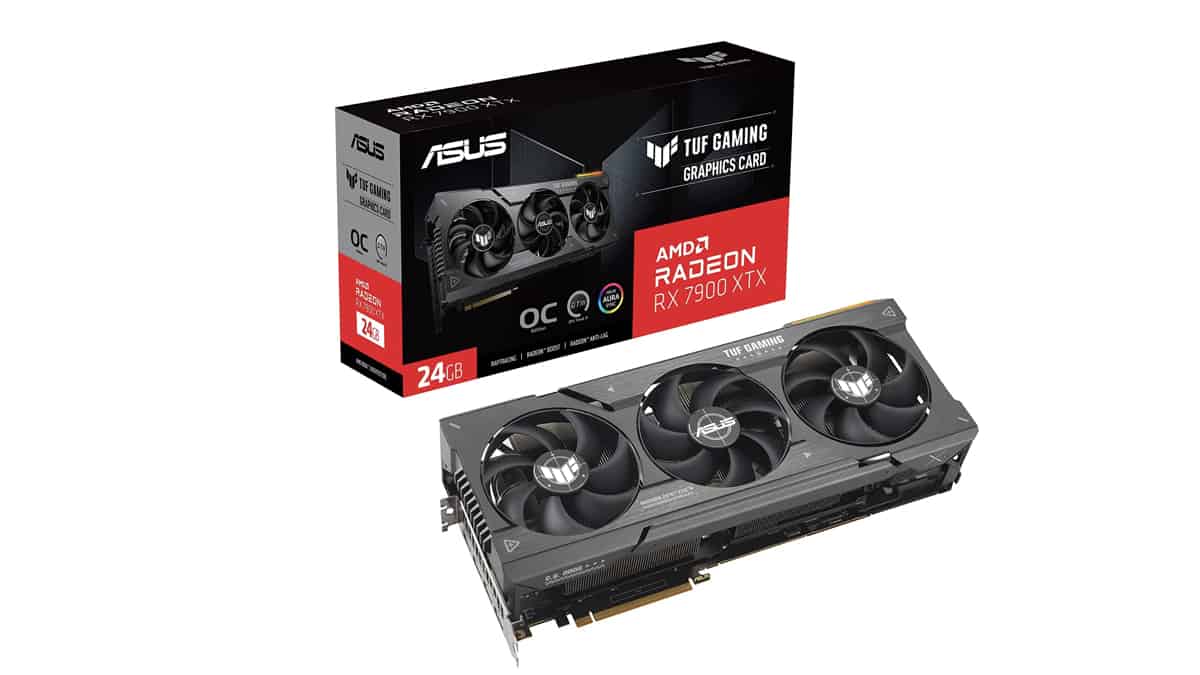RTX 4090 vs RX 7900 XTX: Flagship Ada vs RDNA 3

Table of Contents
If you’re in the market for a top-performing GPU at the end of 2022 then you need to weigh up RTX 4090 vs RX 7900 XTX.
While Nvidia’s bleeding edge video card was released first, and the recently announced RDNA 3 frontrunner hits the market today.
Still, we have enough to go off of for the specs, performance, size, price, and more down below. The two hardware manufacturers have been rivals since the beginning of time, however, RTX 4090 vs RX 7900 XTX is the most full-on battle to date.
Why is this? Well, there’s the performance potential of not just high-end 4K gaming, but also 8K with the best gaming monitors. The future is upon us, and we’re comparing the future of the best graphics cards for gaming this year.
AMD Radeon RX 7900 XTX – quick links
US
- Amazon – AMD Radeon RX 7900 XTX
- Best Buy – AMD Radeon RX 7900 XTX
UK
- Amazon – AMD Radeon RX 7900 XTX
- OVerclockers – AMD Radeon RX 7900 series cards
RTX 4090 vs RX 7900 XTX price comparison
This is a big one for sure. For as much deserved hype and praise as Nvidia’s RTX 4090, the ‘beyond fast’ Ada architecture card doesn’t exactly come cheap. Priced at $1599, it’s not a budget graphics card, that’s for sure. By comparison, the RX 7900 XTX is slightly more wallet-friendly with its recently announced price of $999. The RX 7900 XT comes in at $899.
Both RDNA 3 GPUs, while still expensive in their own right, do significantly undercut the current asking prices by Nvidia. At the time of writing, no RTX 4000 video card has been announced under the $1,000 mark. The closest things came with when Nvidia unlaunched the RTX 4080 12GB variant, which would have sold for $899. If you’re after value for money, AMD takes the win here
RTX 4090 vs RX 7900 XTX specs comparison
| RX 7900 XTX | RTX 4090 |
| RDNA 3 architecture | Ada Architecture |
| 24GB VRAM | 24GB VRAM |
| 6144 Stream processors | 16,384 CUDA cores |
| GDDR6 memory | GDDR6X memory |
| 355W TDP | 450W TDP |
| 960 GB/s bandwidth | 1,008 GB/s bandwidth |
| 384-bit memory bus | 384-bit memory bus |
There are a few key differences between the RTX 4090 and RX 7900 XTX despite the fact that both models feature 24GB memory and a 384-bit memory bus. The major distinction here, though, is the choice of memory type itself. The former uses the faster GDDR6X and the latter is limited to the older GDDR6, which is a little slower in comparison.
As for why AMD has decided to use the slightly slower memory type, this likely comes down to the increased power needed for the ‘X’ variant. This means that Team Red was able to keep the same size bus width and VRAM but cut the overall power draw down by 90W. As for how this plays out in real-world performance and synthetic benchmarks, we’ll find out in December.
This could also be evidenced in the maximum bandwidth available from both cards, as the RTX 4090 takes the lead in terms available data transfer per second. It’s the second PCIe 5.0 compliant GPU to surpass the 1,000+ GB/s mark, matching the rates we first saw with the RTX 3090 Ti in March. Nvidia recommends a minimum of 850W PSU, but partners are suggesting 1000W+.
Although a seemingly minor detail, a major plus of the RX 7900 XTX over the RTX 4090 is the power delivery method. AMD has just announced that its new RDNA 3 generation will utilize a standard 2x 8-pin connectors with no need for a specified adapter. Nvidia required a 12-pin for the previous models, and now the RTX 4090 uses a 16-pin connector, the second card to do so.
The adapter plugs into either 3x or 4x PCIe power connectors depending on the specific make and model. This means that you may need to run more leads from your PSU than you may have threaded through to your board right now. If you don’t have enough space on the brick for new leads, then you’ll need to upgrade your power supply, or buy a specific PCIe 5.0 power lead.
RTX 4090 vs RX 7900 XTX size comparison
The larger TDP of the RTX 4090 has resulted in the need for bigger cooling fans. This means that the top-end Ada graphics card is significantly larger than the previously, comparatively chunky, RTX 3090 Ti. This can be best examined when looking at the Nvidia Founders Edition models and the AIB partner cards in terms of heft.
If we take Gigabyte’s flagship models into account, you can see just how much chunkier we’re talking with the RTX 4090. The cooler itself is nearly twice as thick, meaning you’re going to need a full tower PC case, or some serious overhead in your chassis to accommodate it’s weight and heft.
We can now check the specified dimensions of the Gigabyte RTX 4090 Aorus Master now that it’s been released. All told, this behemoth graphics card is 358.5 x 162.8 x 75.1 mm (LxWxH). In comparison, the RX 7900 XTX has now confirmed to be a 2.5 slot GPU, as opposed to 3 slot (less thick) and have a total length of 287mm. That’s a full 71mm shorter (roughly 19% smaller).

This is roughly the same size as the previous RX 6950 XT flagship, give or take a few millimeters. Also worth noting is that this smaller length equates it to the RTX 3080, which is 285mm. So if you’re someone who has limited space inside their case, you won’t be struggling in quite the same way with AMD’s latest here. It’s certainly good practice from AMD to make things easier.
RTX 4090 vs RX 7900 XTX performance comparison
When we consider the specs, it’s looking as though, theoretically, that the RTX 4090 will be faster than the RX 7900 XTX. This is due to the faster memory type, higher bandwidth, and more cores in use. However, we’ll ultimately have to wait until December for the benchmarks to come out about the RX 7900 XTX, as both video cards have been billed on their 4K and 8K prowess.

What’s true of both the Nvidia RTX 4090 and the AMD Radeon RX 7900 XTX is that both GPUs utilize A.I. upscaling technology to achieve the claimed frame rates. With Team Green, that’s DLSS 3, and Team Red has gone all in with FSR 3. The latter of which is due to launch early into 2023. Native performance appears to take a backseat to the combination of upscaling and ray tracing.
Even four years after the mainstream introduction of ray tracing into modern games, the lighting and rendering technique is still incredibly hardware intensive. Because of this, A.I. supersampling is essential for playable frame rates. AMD has announced its second-generation ray tracing accelerators, however, Nvidia’s latest cards are running third-generation dedicated RT cores.
As to which graphics card stands truly head and shoulders above the other, we won’t fully know until the RX 7900 XTX comes out. We can speculate though. Given the fact that AMD’s card is smaller and cheaper, with a little less under the hood, we wouldn’t be surpised to see it more on par with the RTX 4080 than the bleeding edge of Ampere.
That’s not necessarily a bad thing, though, as it’s also cheaper than Nvidia’s upcoming GPU. We’ll be updating this page often with all new benchmarks and testing information as soon as they’re off the presses. The key takeaway here is that competition is good, and pro-consumer choice means more options for more PC gamers at the end of 2022. The brands co-exist, after all.
- READ our sister-site WePC’s review of the RX 7900 XT
Which graphics card is better – RTX 4090 or RX 7900 XTX?
On paper, it’s looking like the RTX 4090 will take the win from a sheer, raw technological point of view. We wouldn’t be surprised to see Nvidia’s card outperform AMD’s latest effort in a head-to-head, but we won’t know for sure until December. As for your usage, it’s going to depend on the size of your power supply and case, as the RX 7900 XT may be more fitting (pun intended).
Will the RX 7900 XTX be good at ray tracing?
It’s far to say that AMD was very much playing catch up with its first-generation ray tracing accelerators found in the previous generation. However, the second iteration of this tech will be found in RDNA 3 cards, and the results are looking far more promising. While it’s unlikely the ray tracing will be as good as what’s found in Nvidia’s card, what we’ve seen looks solid.
What’s the difference between DLSS 3 and FSR 3?
Both DLSS 3 and FSR 3 are A.I. supersampling technologies baked into the die of each respective GPU. Nvidia’s latest iteration features Frame Generation with the four-generation Tensor Cores. AMD has its own answer to the tech, known as Fluid Motion Frame Technology. They work in a similar manner. A.I. creates accurate frames to fill gaps when upscaling the picture quality.
- NOW READ: Where to buy the RX 7900 XTX, or 7900 XT


